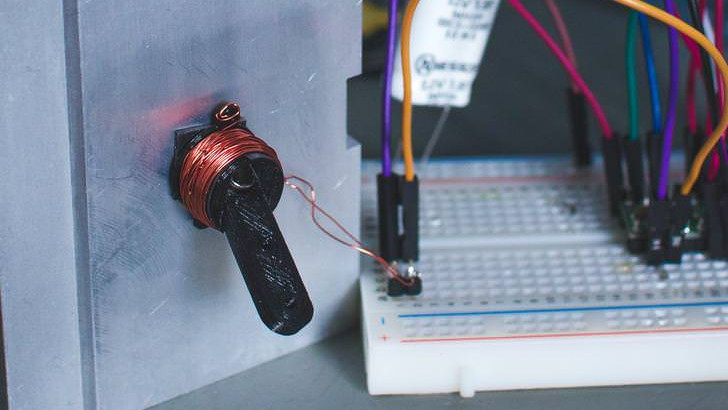Electromagnetic actuators exert small amounts of force, but are simple and definitely have their niche. [SeanHodgins] took a design that’s common in flip-dot displays as well as the lightweight RC aircraft world and decided to make his own version. He does a good job of explaining and demonstrating the basic principles behind how one of these actuators works, although the “robotic” application claimed is less clear.
It’s a small, 3D printed lever with an embedded magnet that flips one way or another depending on the direction of current flowing through a nearby coil. Actuators of this design are capable of fast response and have no moving parts beyond the lever itself, meaning that they can be made very small. He has details on an imgur gallery as well as a video, embedded below.
As we mentioned, flip-dot displays are one example of device that use this method. Compared to things like motors, these actuators may not be capable of exerting much force but have to be quite strong relative to their size. Their simplicity also means they can be made very small, which is why they are among some of the serious tricks used by micro RC airplane builders where even the most aggressively miniaturized of servo actuators are simply not an option.
















This actuator type is frequently used for ultra light model aircraft
Uh, yeah. It’s in the article.
A few of Sean’s projects have popped up here on HaD recently, definitely like what I’ve seen. Seems like a lot of his stuff is on the beginner side of the spectrum, but his presentation and general attitude are good enough that he’s entertaining even if you aren’t strictly learning anything.
Thanks! You’ve made my day with this comment.
I see a variation of The Most Useless Machine employing this “switch” to turn itself off without the motor/servo.
B^)
Next step in the reduction is replacing the switch with a relay.
Aren’t these things pretty inefficient? Like, in order to maintain a position, power needs constantly supplied to the coil.
What if two magnets were placed on the outside, couldn’t it be ‘latching’? So power is only applied to change the position?
Sorry if that’s a stupid question.
That’s not a stupid question at all. Now I’m going to have to tear apart a latching relay. (I always assumed that the action was a spring, but there’s only one way to find out! Well, ok, I guess I could look it up on the Internet. But this way is more fun.)
I would suspect a spring much like a simple light switch stays either off or on. . .
AFAIK some of them use external permanent magnets and the armature stays sticking to the one it was thrown last time. There are even monostable relays which use a PM as boost to reduce power needs, but there the forces are balanced in a way to allow only one stable position.
Other bistable relays use the remanent magentization of the armature – similar to a flip-dot.
A question to the Arduino&Co. experts in here.
I would like to control multiple actuators with a microcontroller like Arduino. How would you do this?
Say, I want to control 25 or even more.
I had the idea of making some kind of flip flop display.